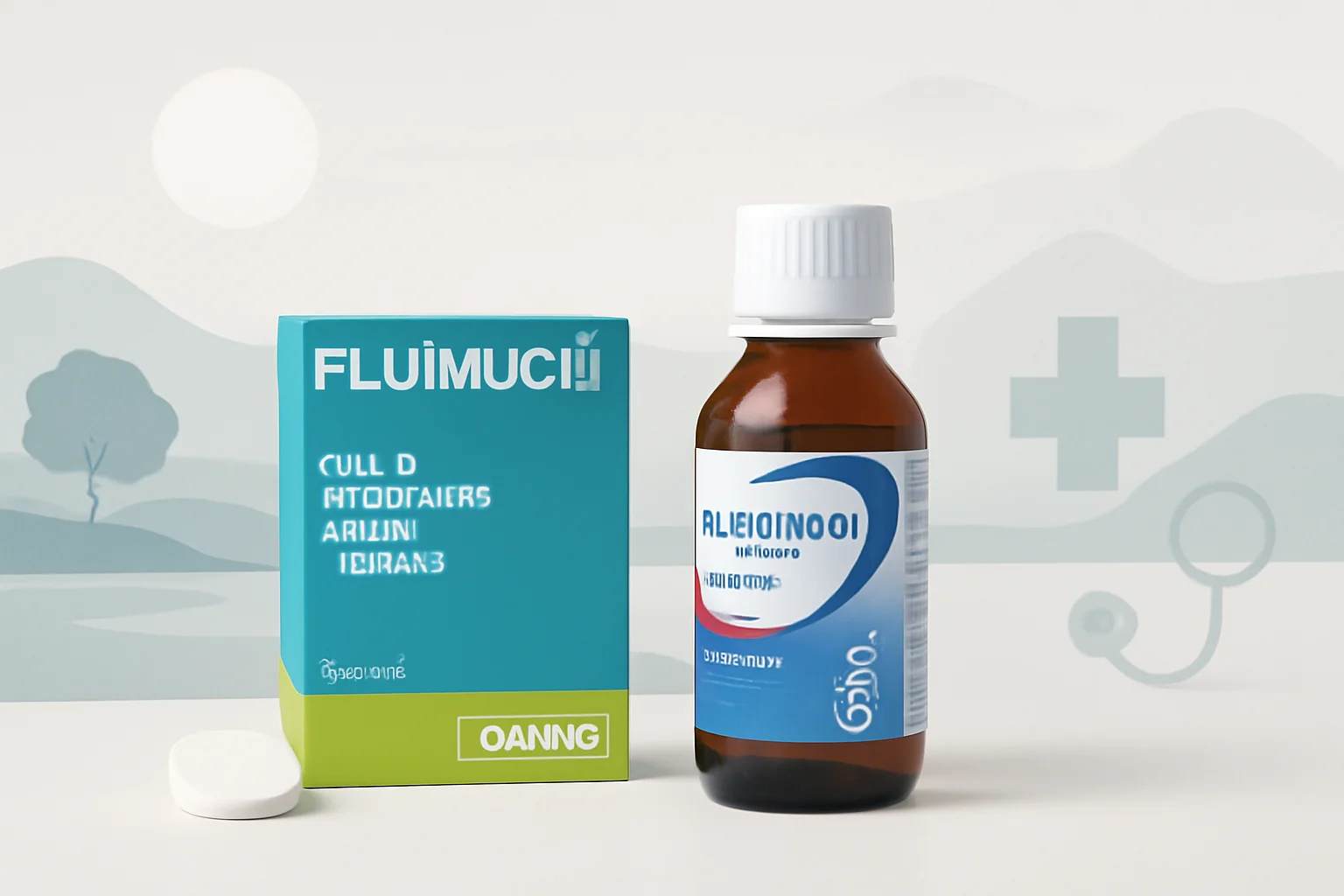
Fluimucil or Mucosolvan: Which is the Ideal Choice for Coughing?
Respiratory diseases, such as colds, influenza, or bronchitis, are common problems that complicate the lives of many people. These illnesses often involve coughing and mucus production, making breathing and daily activities difficult. To alleviate coughing and remove mucus, many seek effective solutions. Two popular medications, Fluimucil and Mucosolvan, play a significant role in cough relief and mucus thinning. Both contain different active ingredients and help clear the airways through different mechanisms.
Choosing between Fluimucil and Mucosolvan is not straightforward for many, as both have various benefits and properties. Selecting the right medication involves considering not only effectiveness but also side effects, usage guidelines, and individual needs. The aim of this article is to help readers understand the differences between the two medications, thereby contributing to informed decision-making.
Fluimucil: Active Ingredients and Mechanism of Action
The active ingredient in Fluimucil is acetylcysteine, which is known as a mucolytic agent. This compound helps reduce the viscosity of mucus, making it easier to remove from the airways. The action of acetylcysteine is based on breaking down mucus, which can be particularly useful when the secretion is thick and difficult to expel. Additionally, Fluimucil has antioxidant properties, which help maintain the health of the airways.
Fluimucil is particularly recommended when a patient suffers from a respiratory infection and significant mucus production accompanies the cough. Acetylcysteine not only alleviates coughing but also reduces inflammation in the airways, contributing to a faster recovery. The medication is generally available in powder form, which must be dissolved in water, and the resulting solution should be taken.
It is important to note that Fluimucil can be used by both adults and children; however, the dosage should be adjusted based on age and body weight. The duration of treatment typically depends on the severity of the illness, but for the best results, the medication should be used according to the recommendations of a healthcare professional.
Possible side effects of Fluimucil may include gastrointestinal disturbances, such as nausea or diarrhea. These effects are usually mild and transient, but if symptoms worsen or persist, it is advisable to consult a doctor. The active ingredient can also cause allergic reactions, so it is essential for patients to be informed about the risks and potential side effects.
Mucosolvan: Active Ingredients and Mechanism of Action
The main active ingredient in Mucosolvan is ambroxol, which also has mucolytic and cough-relieving properties. Ambroxol helps to thin mucus and clear the airways while stimulating mucus production in the bronchi, thereby making coughing more productive. The use of this medication is particularly beneficial when a patient struggles with a dry cough and cannot effectively expel mucus from the airways.
One advantage of using Mucosolvan is that it is available in various forms, including tablets, syrup, and inhalation solutions. This allows patients to easily find the most suitable dosage form for themselves. Ambroxol is quickly absorbed in the body, and its effects can be felt relatively soon, aiding in faster symptom relief.
Taking Mucosolvan is generally safe; however, as with any medication, side effects may occur. These may include gastrointestinal disturbances such as nausea, diarrhea, or stomach pain. The medication can also trigger allergic reactions, and patients should be vigilant for potential symptoms. As with Fluimucil, it is advisable to start using Mucosolvan under medical guidance, especially in children.
The use of ambroxol may also be beneficial in preventing respiratory diseases, as it can help protect the airways and reduce inflammation. For those who frequently suffer from respiratory infections or chronic cough, regular use of Mucosolvan may improve the quality of breathing and reduce the frequency of illness.
Fluimucil and Mucosolvan: Comparison and Considerations for Choice
When choosing between Fluimucil and Mucosolvan, several factors should be considered. First, the active ingredients of the two medications differ, leading to different mechanisms of action. Fluimucil focuses on reducing mucus viscosity through the action of acetylcysteine, while Mucosolvan promotes cough production through its ambroxol content.
The second consideration is the severity of symptoms. If a patient is struggling with a cough accompanied by abundant mucus production, Fluimucil may be a more effective choice, as it is specifically designed to help remove thick secretions. Conversely, if symptoms present mainly as a dry cough, Mucosolvan is recommended, as it aids in making the cough more productive.
The third consideration is the form of the medication. Since Mucosolvan is available in multiple dosage forms, patients can more easily find the one that suits them best. Fluimucil, on the other hand, is typically available in powder form, which may not be convenient for everyone. The use of inhalation solutions may also be a factor, as this form acts directly on the airways.
It’s also important to consider side effects carefully. Both medications may have side effects, but these often depend on individual reactions. Those who have experienced allergic reactions to a specific active ingredient should consult their doctor before making a choice.
Medical advice is recommended in both cases, so patients can make the best choice for their treatment. Doctors can provide the best decision regarding the use of medications, taking into account the patient’s condition and medical history.
—
This article does not constitute medical advice. For any health issues, please consult a physician and follow their recommendations.

